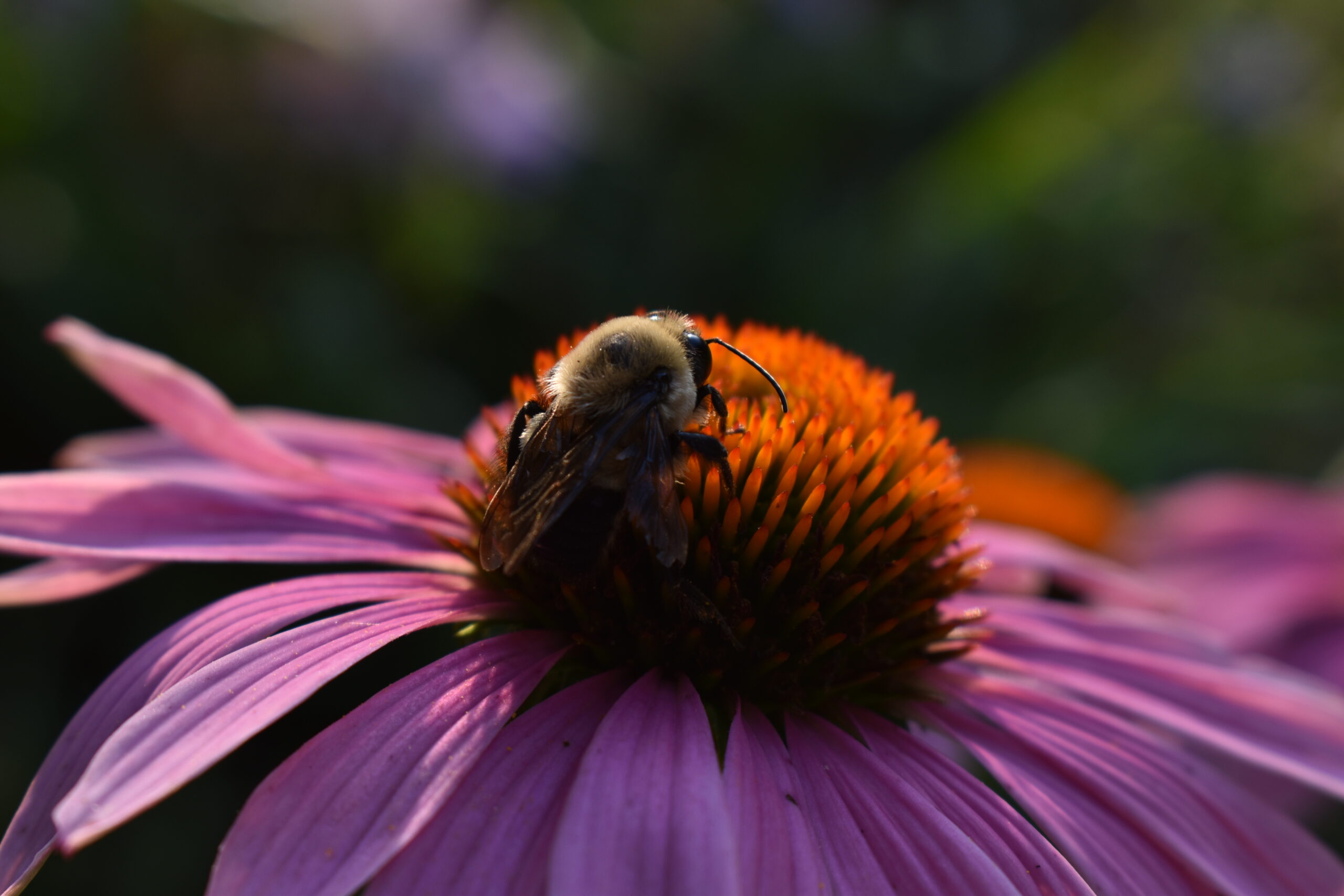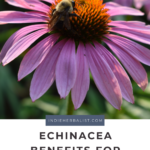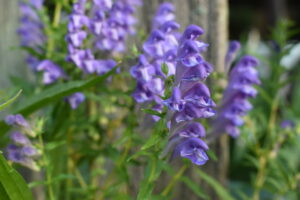Links contained in this post and elsewhere on my website may include affiliate links. When you make a purchase through these links, I earn a commission at no additional cost to you. I only link to products and services that I love - and that I think you will love, too!
What do you know about Purple Coneflower? Most people know at least a little about this plant. It’s commonly known as Echinacea. But Echinacea’s many uses may surprise you! This herb’s current use as a cold and flu season herb doesn’t really do it justice. Read on to discover more about Echinacea benefits. We will also look at how herbalists use this plant for wellness.
What species are used?
First, let’s clarify which plants we are talking about. Eastern Purple Coneflower is the common name. Usually, this is how the plant is labeled in garden centers. Herbal suppliers generally list three different species. These include:
- Echinacea angustifolia
- Echinacea pallida
- Echinacea purpurea
There are actually 9 different species. They are all native to North America.
Modern perspectives and echinacea benefits
Herbalists Kerry Bone and Simone Mills provide the following summary of Echinacea (Bone, 2013). Modern herbalists generally agree that Echinacea is:
- anti-inflammatory
- immunomodulatory
- lymphatic
- vulnerary
So it’s believed to be good for the immune system and for the skin and mucus membranes.
As you will see, these uses line up with herbal history. Although this herb is sometimes called an “antibiotic” or “antiviral” herb, those labels aren’t accurate. According to Bone and Mills,
“Any significant clinical antibacterial and antiviral activity probably follows indirectly from immune enhancement.” (Bone & Mills, 2013).
So calling Echinacea antibiotic or antiviral is too simple. It’s better to think of it as an immune system herb.
Traditional Echinacea benefits
Traditional herbalists have a lot to say about Echinacea! Especially the Eclectics. The entry in King’s American Dispensatory gives a detailed picture of use by the Eclectics.
From this source, Echinacea’s traditional uses include:
- breaking infectious fevers
- topical and internal use after venomous bites and stings
- wound care for infected wounds
- gargle for sore throats, mouth ulcers, and tonsilitis
- sepsis
- gangrene
- burns
So, according to traditional use, this plant is important for the types of immune needs seen in wound healing and skin and mucus membrane infections.
In addition, Echinacea was used against severe infectious diseases. According to Felter (1922), it was an auxiliary remedy assisting (among others):
- diphtheria
- meningitis
- scarlet fever
- small-pox
- and typhoid fever.
When you think about it, most of these uses hint at a remarkable ability to support the immune system. It’s a shame that this herb is just a “cold and flu” remedy to most people!
Echinacea benefits for home herbalists
Home herbalists can use this herb for immune system support and first aid. It works well in blends with other herbs or alone.
I think it’s especially important to remember that it is a good topical herb. Extracts or teas can be applied to the skin for minor first-aid care. Also consider using Echinacea in conjunction with allopathic care for more serious problems.
In other words, I wouldn’t rely on soley on Echinacea in the event of, say, a spider bite. However, it might be a perfect herbal addition to healing up after you’ve been seen by your doctor. The same goes for serious illnesses. Echinacea makes a good supportive herb for the immune system in many scenarios.
What to keep on hand
Home herbalists can grow and harvest their own Echinacea. It’s a pretty plant that looks great in a flower garden. Alternatively, the dried roots are available through herbal suppliers.
Although keeping the dried root on hand is helpful, I like keeping a tincture in my herbal supplies. It’s easier to work with when you need it for something topical. Simply apply a few drops at a time directly wherever it’s needed. The only downside of an extract is the taste, which is fairly strong. Mixing a serving of extract with a little honey can make it taste better.
The tea has a milder taste. Although often sold as a tea, the roots are best when made into a decoction. This takes time to make correctly. Keeping a high-quality echinacea extract in your herbal cupboard, on the other hand, means you can access Echinacea benefits quickly when needed. If you’re unfamiliar with infusions and decoctions, I have information on the ways to prepare herbal teas in this article.
Safety and precautions
Good quality Echinacea will make your tongue tingle a bit. However, it’s also possible to be allergic to it. If you notice swelling or itching of your mouth or tongue, discontinue using Echinacea. The same is true if you notice contact dermatitis, itching, or redness of the skin.
Learn more
Interested in learning more about immune herbs? Read this article on herbs for immune support.
Richo Cech at Strictly Medicinal Seeds has an interesting video that compares all 9 species of Echinacea.
References
Bone, K; Mills, S. (2013). Principles and Practice of Phytotherapy: Modern Herbal Medicine. 2nd ed. Churchill Livingstone Elsevier. Edinburgh.
Felter, H.W.; Lloyd, J. U. (1898) King’s American Dispensatory https://www.henriettes-herb.com/eclectic/kings/echinacea.html
Felter, H.W. (1922) The Eclectic Materia Medica. https://www.henriettes-herb.com/eclectic/felter/echinacea-angu.html






